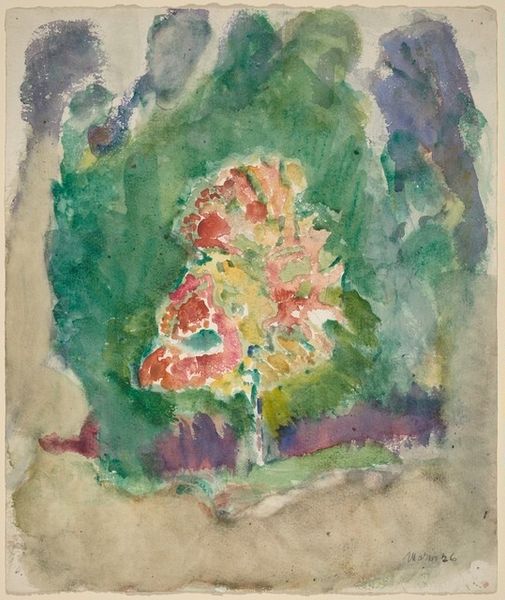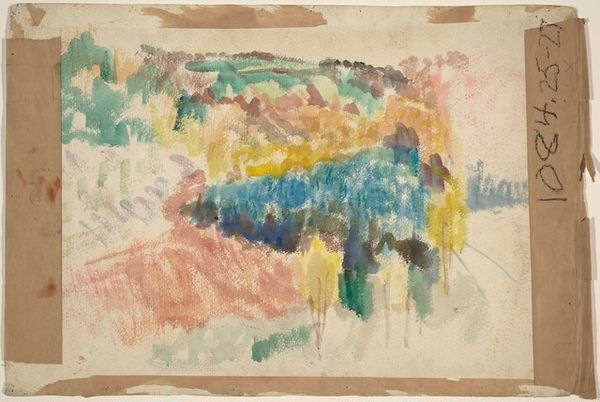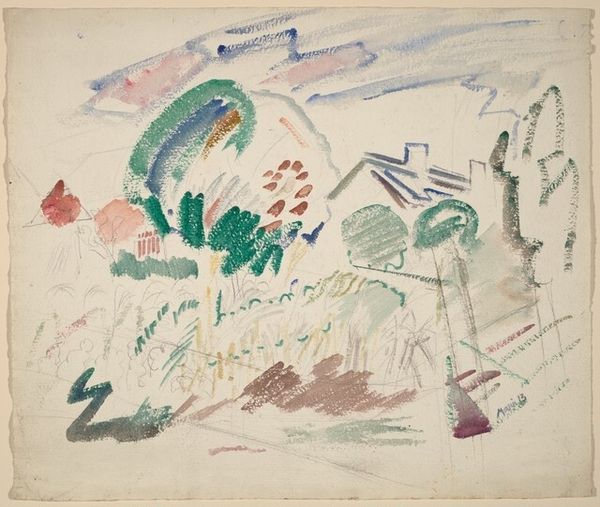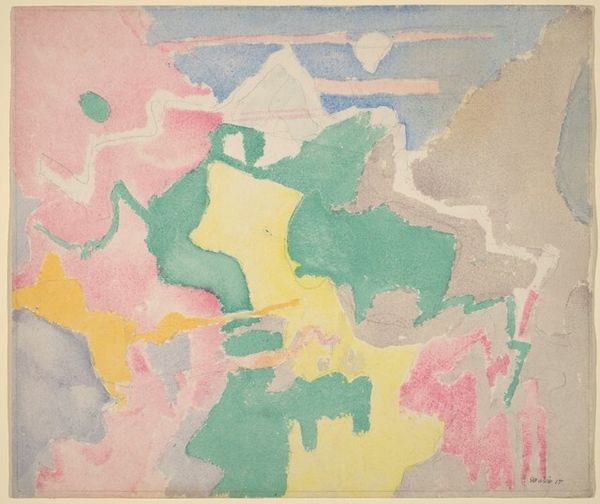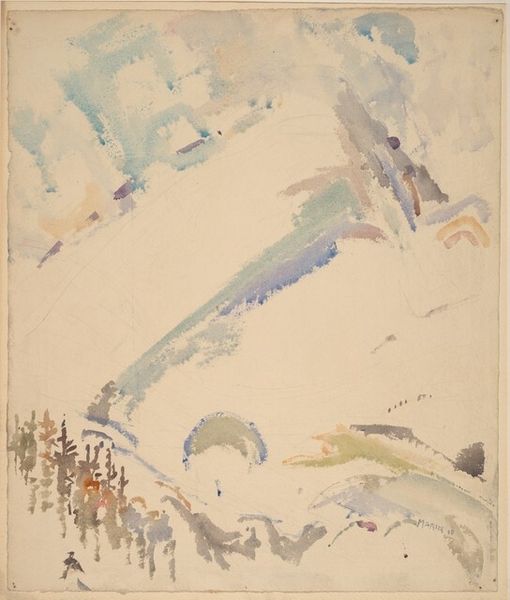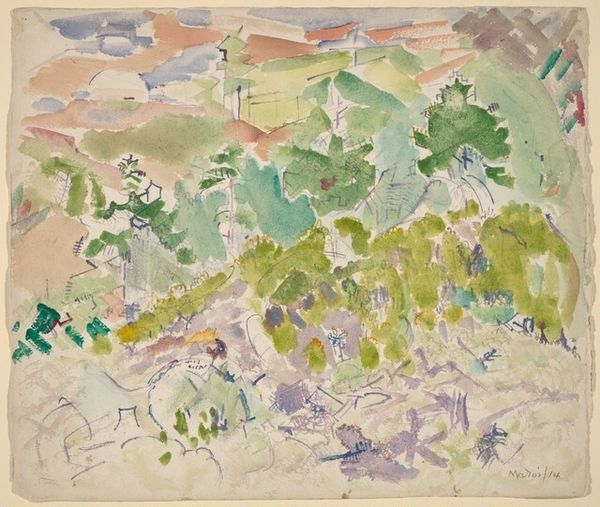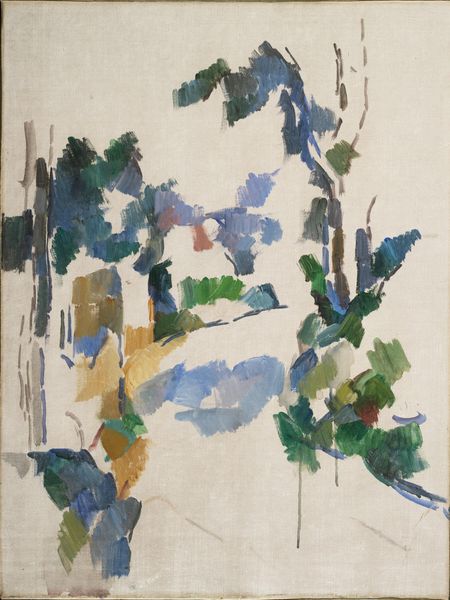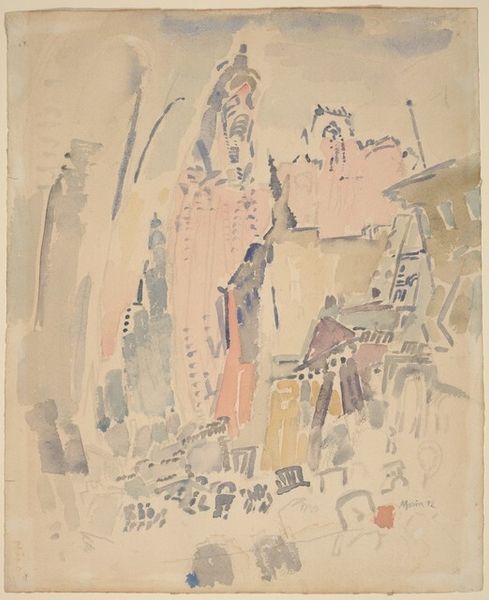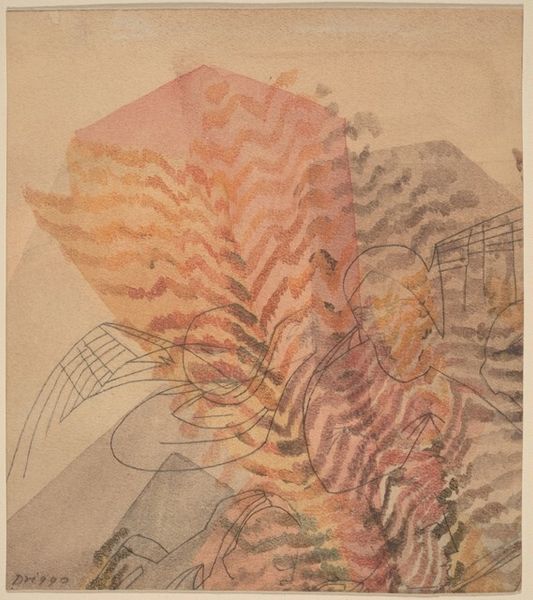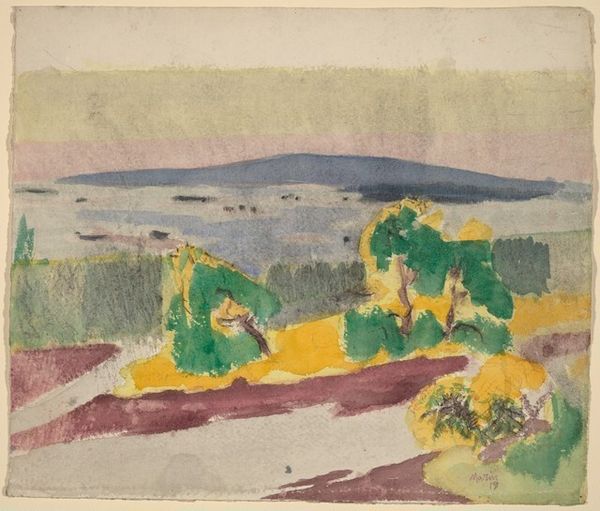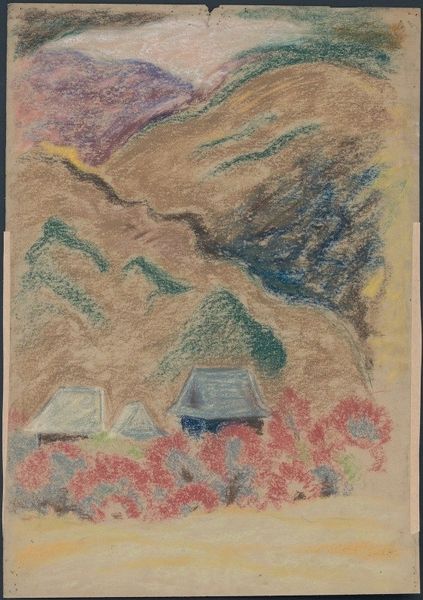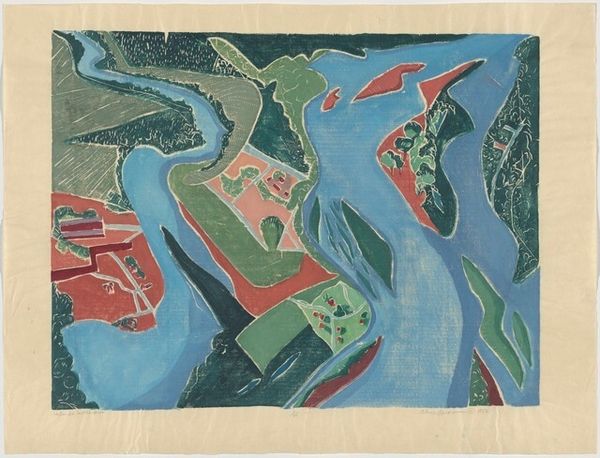
drawing, watercolor
#
drawing
#
landscape
#
watercolor
#
abstraction
#
modernism
#
watercolor
Dimensions: overall: 35.5 x 42.2 cm (14 x 16 5/8 in.)
Copyright: National Gallery of Art: CC0 1.0
Curator: This is John Marin's "Echo Lake District, Pennsylvania," a watercolor from 1916. What's your immediate reaction? Editor: Ethereal. It feels like a memory, almost dissolving before you can grasp it. Watercolor’s perfect for that elusive quality, wouldn't you say? Curator: Absolutely. Marin often used watercolor to capture fleeting moments, the dynamism of the landscape. In its historical moment, think about how this type of abstraction reflects a move away from the established traditional approaches and styles, to engage modern ways of perceiving space and representing the landscape. Editor: Dynamism is key. See how he avoids hard lines? Instead of meticulously rendering trees or water, he suggests them with these bursts of color. It's like he’s painting the feeling of being there, the energy of the place. Makes you wonder what 'Echo Lake' sounded like. What kind of conversations did the surrounding landscapes have at the time? Curator: Marin was deeply influenced by modernism, particularly Cubism and Futurism. Look at how he fractures the landscape, presenting multiple perspectives simultaneously. This challenges the traditional notion of a static, unified viewpoint. And by this, of course, he joins an ever-expanding catalogue of artists questioning that perspective and representing more modern realities. Editor: The almost playful use of zig-zags, scattered amongst more traditional and romantic watercolor techniques...I'm strangely comforted, a visual warm blanket for my senses. Do you think his emotional state informed his choices, the colors? Curator: Undoubtedly. Artists operate within their personal and social contexts. Knowing the rise of American Modernism at the time helps inform our reception of the piece, and Marin was looking toward Europe even in representing Pennsylvania, yet this is filtered through a very unique artistic lens. Editor: That lens definitely gives the landscape an abstract poetry. Almost a dream, fading away at the edges of consciousness. I will never think about Pennsylvania landscapes the same after this, even as the colors may literally fade in real life. Curator: Well put. It makes us see the familiar anew. Editor: Precisely. It’s less about accuracy, more about authenticity. An impression on the surface for longer than perhaps imagined.
Comments
No comments
Be the first to comment and join the conversation on the ultimate creative platform.
